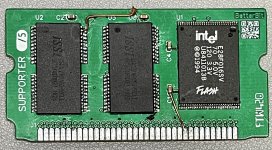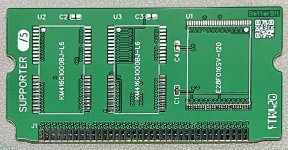This is an ongoing effort to reverse engineer the DT320 eMate 300 Expansion module. The reference module was generously loaned by colin (@This Does Not Compute) of This Does Not Compute. Schematics, gerbers, datasheets, and more are currently closed in a private repo and will be released once revisions are tested and finalized.
I will make 5 "numbered" boards available for purchase for early supporters. Prices will likely be in the $50 range which is significantly cheaper than the old stock which currently sells north of $200. Proceeds from early supporters will be used to cover the cost of this project, remaining proceeds will be used to support future open source / open hardware projects.

Populated V1 PCB; bodges and all!

Bare PCB (might delete later)
I will make 5 "numbered" boards available for purchase for early supporters. Prices will likely be in the $50 range which is significantly cheaper than the old stock which currently sells north of $200. Proceeds from early supporters will be used to cover the cost of this project, remaining proceeds will be used to support future open source / open hardware projects.

Populated V1 PCB; bodges and all!

Bare PCB (might delete later)
Last edited:
